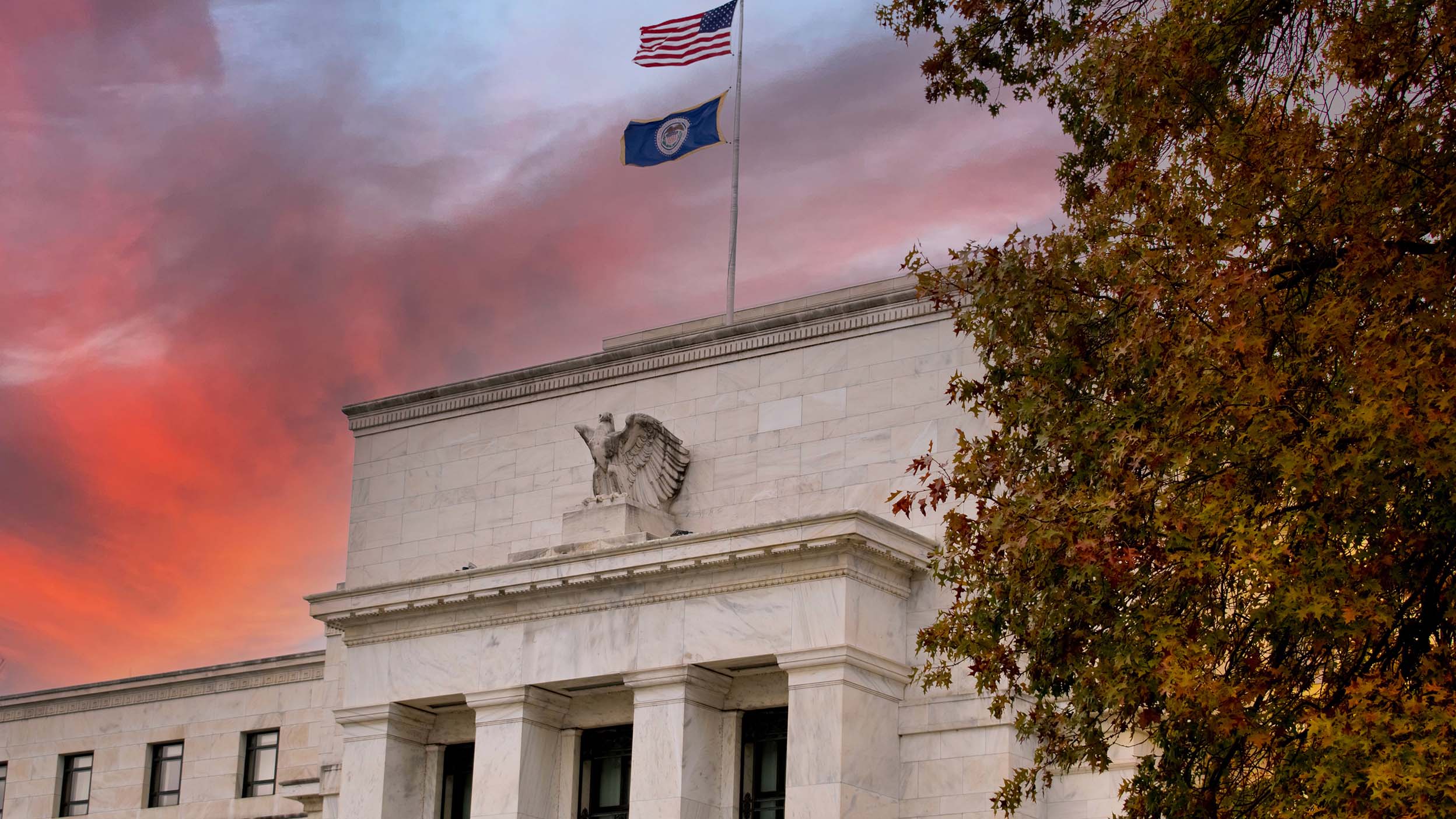
Markets and Economy Economic data are sending mixed and confusing signals
We cover a wealth of recent data reports and explore what they could mean for the path of growth going forward.

U.S. Federal Reserve (Fed) Chair Jay Powell didn’t reveal any surprises during his press conference last week, but markets were hoping for a more positive message.
I expect the Fed will start to “downshift” tightening in December, barring some surprising data in the next several weeks.
Jumbo size hikes carry more risk, so I believe the sooner that central banks can get back to more “normal” increments in rate hiking, the better.
As the mother of three, I’ve learned over the years the dangers of telling my children what they already know but don’t necessarily want to hear. Some of my favourite pearls of wisdom include “If you eat all your Halloween candy tonight, you’ll get sick,” and “If you go out in January in that halter top, you’ll be very cold.” Or my all-time favourite: “If you open that bottle of glitter, we’ll never get glitter out of our house.” Those and many other obvious statements, while all true, were met with significant derision and negativity. My experiences as a mother came in handy last week as I watched markets react to being told what they already knew but didn’t necessarily want to hear.
The U.S. Federal Reserve (Fed) hiked rates 75 basis points last week. That was no surprise; markets were anticipating it. And markets initially reacted positively. In fact, there seemed to be a fixation on one sentence in the Federal Open Market Committee (FOMC) announcement that was viewed as dovish: "In determining the pace of future increases in the target range, the Committee will take into account the cumulative tightening of monetary policy, the lags with which monetary policy affects economic activity and inflation, and economic and financial developments."1
But then came the press conference, which brought new meaning to the expression “quit while you’re ahead.” It just wasn’t as positive as markets had anticipated in the weeks leading up to the meeting, but Fed Chair Jay Powell said nothing that markets didn’t already know. A few excerpts from the presser2 and my reactions:
In short, investors shouldn’t be frightened by the Fed press conference last week, in my view. I expect the Fed will start to “downshift” tightening to 50 basis points in December, barring some surprising data in the next several weeks. And hopefully upcoming inflation data will be supportive.
I was encouraged by last week’s U.S. jobs report. While it indicated a still-strong labour market, wage growth is moderating. This is supporting my thesis that a “softish” landing — or at least a not-so-hard landing — is still possible because of the unique nature of the U.S. job market. There are so many job openings that if companies emphasize hiring freezes over layoffs, I expect job mobility to decrease and wage growth to be tempered materially without a very significant rise in unemployment.
It’s also worth noting that the Bank of England (BOE) decided to hike rates by 75 basis points last week. Again, we heard some things that we didn’t want to hear but that we already know. But we also heard something that we didn’t know but were happy to hear.
The Monetary Policy Committee anticipated a “very challenging outlook for the UK economy” in the minutes of their meeting, with an expectation of being “in recession for a prolonged period.” None of that is positive — but none of that is surprising either. However, Bank of England Governor Andrew Bailey positively surprised markets with this statement: “We can't make promises about future interest rates, but based on where we stand today, we think Bank Rate will have to go up by less than currently priced in financial markets."6
This contrasts dramatically with Powell’s comments. While this likely reflects the more difficult economic circumstances the UK finds itself in versus the U.S., any time a central bank can positively exceed market expectations, that is welcome. Despite this difference, I suspect the BOE and the Fed are moving in the same direction, heading for a shift to smaller rate hikes. Jumbo size rate hikes carry with them more risk, as I’ve said before, and so the sooner that central banks can get back to more “normal” increments in rate hiking, the better.
The U.S. midterm elections are this week, but the big focus in the U.S. for markets will be on the October Consumer Price Index print. I will also be focused on consumer inflation expectations from the University of Michigan and New York Fed. In coming weeks, we will want to follow Chinese economic data and markets closely. Chinese stocks experienced a strong rebound last week on oversold conditions that led to attractive valuations (as I noted in last week's blog). There’s excitement around signs of a post-COVID economic reopening/rebound, as well as progress with U.S. audit inspections, as the first round finished ahead of schedule last week.
Finally, superstitious investors may be interested to know that the Houston Astros defeated the Philadelphia Phillies to win the World Series. Over the last century, Philadelphia baseball championships have coincided with some of the worst times in U.S. financial history, including 1929 (preceding the Great Depression), 1980 (a major recession), and 2008 (the Global Financial Crisis).7 This is no more than a coincidence, of course, but it’s a piece of trivia that’s gotten a lot of attention given the superstitious nature of both investors and baseball fans. I’m sure there are at least a few of you reading this blog who, despite knowing better, are breathing a sigh of relief — just in case.
Source: FOMC statement, Nov. 2, 2022)
Source: Federal Reserve, Jay Powell press conference, Nov. 2, 2022
Source: Alan Blinder, Wall Street Journal Op-Ed, “Why a 2023 Recession May Be Mild”, Oct. 30, 2022
Source: FOMC Summary of Economic Projections, Sept. 21, 2022
Source: Bloomberg News, “Summers Sees Risk Fed Needs to Hike Past 6% to Curb Inflation,” Nov. 4, 2022
Source: Reuters, “BoE's Bailey: We think rates will rise by less than markets expect,” Nov. 3, 2022
Source: The Wall Street Journal, “If the Philadelphia Phillies Win the World Series, Prepare for an Economic Crisis,” Oct. 27, 2022

We cover a wealth of recent data reports and explore what they could mean for the path of growth going forward.

A bond is an investment that represents a loan to a corporation or government and generates interest income for an investor.

2025 has been a roller coaster ride for markets. Comments on tariffs and on Federal Reserve Chair Jerome Powell led to a recent upswing.
NA2580188
Important information
Header image: Douglas Rissing / Getty
Some references are U.S. centric and may not apply to Canada.
Past performance is not a guarantee of future results.
This does not constitute a recommendation of any investment strategy or product for a particular investor. Investors should consult a financial professional before making any investment decisions.
All investing involves risk, including the risk of loss.
The Federal Open Market Committee (FOMC) is a 12-member committee of the U.S. Federal Reserve Board that meets regularly to set monetary policy, including the interest rates that are charged to banks.
The Consumer Price Index (CPI) measures change in consumer prices as determined by the U.S. Bureau of Labor Statistics. Core CPI excludes food and energy prices while headline CPI includes them.
A basis point is one hundredth of a percentage point.
The federal funds rate is the rate at which banks lend balances to each other overnight.
The terminal rate is the anticipated level that the federal funds rate will reach before the U.S. Federal Reserve stops its tightening policy.
The U.S. Federal Reserve’s “dot plot” is a chart that the central bank uses to illustrate its outlook for the path of interest rates.
Tightening is a monetary policy used by central banks to normalize balance sheets.
The opinions referenced above are those of the author as of Nov. 7, 2022. These comments should not be construed as recommendations, but as an illustration of broader themes. Forward-looking statements are not guarantees of future results. They involve risks, uncertainties and assumptions; there can be no assurance that actual results will not differ materially from expectations.
This link takes you to a site not affiliated with Invesco. The site is for informational purposes only. Invesco does not guarantee nor take any responsibility for any of the content.